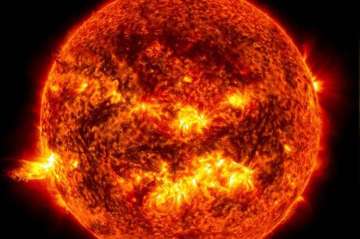New Delhi: The sun has gone "completely blank" for the second time this month suggesting that our star is entering a new period of decreased activity — one that will continue to last for about five years.
Something erupted on the far side on Saturday that discarded a massive cloud of plasma into space. “Within a few days, the underlying blast site should reveal itself as the sun’s rotation brings the active region over the horizon,” an expert said.
“We shall see if it is a large sunspot or something less threatening.”
The sun goes blank second time this month
But, despite the overall decline, history has proven that some of the largest solar storms in memory can occur when sunspots appear to be dying out.
Earlier this month, there were no sunspots on the massive star's surface for four days - something which hadn't happened since 2011.
A lack of sun spots is totally normal, but it does hint that the sun is heading for its next "solar minimum phase".
The next solar minimum phase is expected to take place in 2019 or 2020, says meteorologist Paul Dorian of Vencore Weather, who expects to see an increasing number of spotless days over the next few years.
Statistics showing top spotless days of sun
The last time the sun saw such a long phase with no sunspots, it ushered in what scientists refer to as a the 'Maunder Minimum' back in 1645.
This caused temperatures to plunge dramatically, and even resulted in the Thames freezing over.
Some experts think that a similar mini ice age could be coming again soon.
The solar phenomenon could even prove dangerous for astronauts, says Paul Dorian.
During these phases of the sun, extreme ultraviolet radiation drops, resulting in lower aerodynamic drag as the Earth's atmosphere cools and contracts.
The lower drag can cause space junk to accumulate in orbit, which could result in a collision with the International Space Station or other spacecraft.
Latest World News
